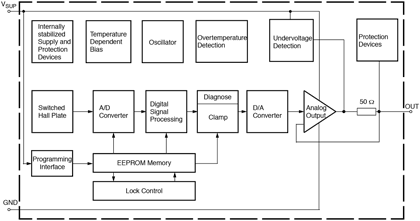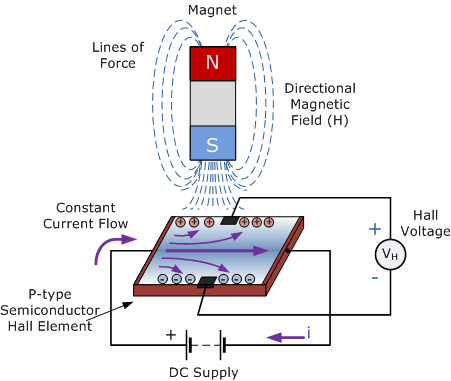- Home
- Symmetry Blog
- Finding the Universal Linear Hall-Effect Sensor
Finding the Universal Linear Hall-Effect Sensor for Every Application | Symmetry Blog
About Symmetry Electronics
Established in 1998, Symmetry Electronics, a Division of Braemac, is a global distributor of electronic components and systems. Combining premier components and comprehensive value-added services with an expert in-house engineering team, Symmetry supports engineers in the design, development, and deployment of a broad range of connected technologies.
Exponential Technology Group Member
Acquired by Berkshire Hathaway company TTI, Inc. in 2017, Symmetry Electronics is a proud Exponential Technology Group (XTG) member. A collection of specialty semiconductor distributors and engineering design firms, XTG stands alongside industry leaders TTI Inc., Mouser Electronics, and Sager Electronics. Together, we provide a united global supply chain solution with the shared mission of simplifying engineering, offering affordable technologies, and assisting engineers in accelerating time to market. For more information about XTG, visit www.xponentialgroup.com.

The precision of a good linear hall-effect sensor is crucial to many of the applications we rely on every day. Without linear hall-effect sensors, we would not know when are automobiles are low on fuel and we could easily find ourselves stranded on the road. Linear hall-effect sensors also help with automotive transmission gear shifting.
However, many linear hall-effect sensors provide many more features than what is necessary for most applications, and that can be a burden to costs. Often, engineers need a basic, reliable linear hall sensor that provides exactly what is needed from a hall sensor, without all the fluff.
Let's take a look at how engineers can look for plain and simple linear hall-effect sensors that can be relied on, while also being light on the budget.
But First, the Basics of Linear Hall-Effect Sensors
In a previous blog post, our Applications Engineer Tyler Wojciechowicz helped explain the basics of what a hall effect sensor is and how it is useful.
A Hall-effect sensor (Hall sensor for short) is a transducer that varies its output voltage as the magnetic field near it varies. Within a Hall sensor, current is applied along a thin strip of conductive material. In the presence of a magnetic field, the electrons line one edge of the strip inducing a change in voltage across the sides perpendicular to current flow.
Most of Symmetry's Hall sensors offer user-programmable gain, offset, and temp compensation so a single sensor can be used for a number of applications. This also means the threshold and sensitivity of your design can be easily modified without modifying your hardware or the code on your controlling MCU.
The many different functions of a linear hall-effect sensor help make many different applications possible. The linear hall-effect sensor's ability to detect linear travel allow an automotive to track valve positions. Linear hall-effect sensors can also track head-on travel, such as those used in weight scales (not just for the body, but for vehicles, freight, etc.). Because a linear hall-effect sensor can provide angle measurement, applications can attach the sensor to a float for fluid level measurements, like those within an automotive fuel tank. Linear hall-effect sensors work well with brushless DC motors as well, helping sense rotor position to provide smooth operation.
Although similar to a rotary hall-effect sensor, a linear hall-effect sensor measures the linear movement of a magnetic field, rather than the rotation. While these tiny devices may seem difficult to customize, they are in fact easily programmable based on output voltage.
Keeping it Universal
One of the best entry-level linear hall-effect sensors on the market right now is Micronas' HAL 188y series.
HAL 188y is a universal, value- optimized Hall-Effect sensor family with a ratiometric, linear analog output. The sensors can be used for magnetic-field measurements such as current measurements or detection of mechanical movement, like for small-angle or distance measurements. The sensors are robust and can be used in harsh electrical and mechanical environments.
Major characteristics like magnetic field range, sensitivity, offset and the temperature coefficients are programmable in a non-volatile memory. Several output signal clamping levels can be programmed to indicate various fault conditions like under/overvoltage, under/overflow or thermal supervision.
The HAL 1880 is programmable by modulating the supply voltage with a serial telegram on the sensor's output pin. No additional programming pin is needed. The easy programmability allows a 2-point calibration by adjusting the output signal directly to the input signal (like the mechanical angle, distance, or current). Individual adjustment of each sensor during the customer's manufacturing process is possible. With this calibration procedure, the tolerance of the sensor, the magnet and the mechanical positioning can be compensated in the final assembly. The sensor is designed for industrial and automotive applications, is AEC-Q100 qualified, and operates in the junction temperature range from -40 °C up to 170 °C. The HAL 188y sensors are available in the very small leaded package TO92UA-2.

The HAL 188y sensors are a monolithic integrated circuits produced in a proven submicron CMOS technology.
They provide an output voltage proportional to the magnetic flux through the Hall plate and proportional to the supply voltage (ratiometric behavior). Selectable clamping levels for the output voltage as well as diagnostic features are available. HAL 188y includes a temperature- compensated Hall plate with spinning- current offset compensation, an A/D converter, digital signal processing, and protection devices on all pins. HAL 1880 has an EEPROM memory with redundancy and lock function for the calibration data and the data register information, a serial interface for programming the EEPROM. The IC can be programmed via supply or output pin voltage modulation.
The internal digital signal processing is a great benefit because analog offsets, temperature shifts, and mechanical stress do not degrade the sensor accuracy.

